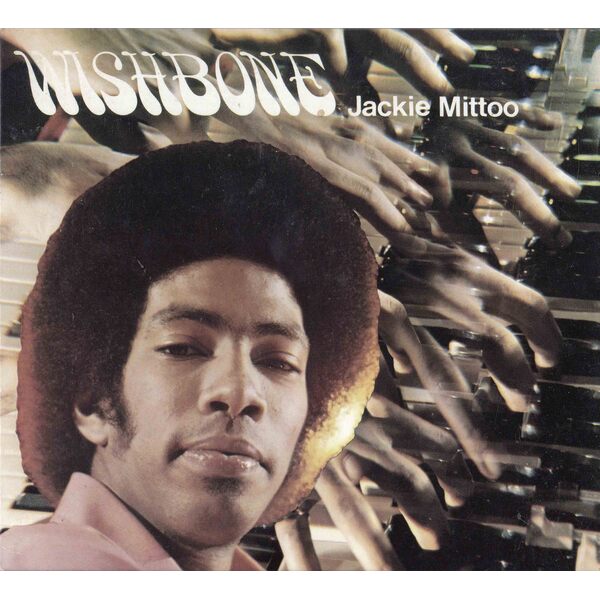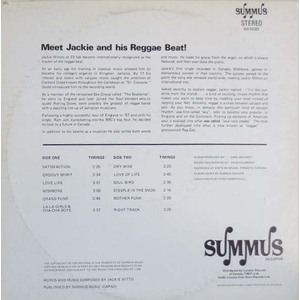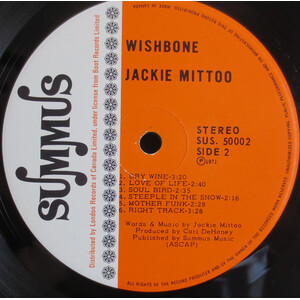Information/Write-up
Reviewed by Robert Williston:
In the summer of 1971, Jackie Mittoo surprised a lot of people. Not with his talent — that was already legendary — but with Wishbone, a sweeping, genre-blending album recorded in Toronto that reimagined reggae for a new context. This wasn’t Kingston’s raw, stripped-down studio sound. Wishbone was deliberate, ambitious, and infused with orchestral colour — made not in a yard-style shack, but in the polished rooms of Eastern Sound Studios, with members of the Toronto Symphony Orchestra backing the grooves.
At just 23, Mittoo had already anchored the Skatalites and Soul Vendors, played on dozens of foundational Studio One cuts, and helped invent ska and rocksteady. But Wishbone was his first major musical statement in Canada, where he had relocated in 1968 and quickly immersed himself in the West Indian cultural scene. He gigged in lounges, played supper clubs, and built up goodwill the hard way — night after night, set after set.
Wishbone captures that sense of forward motion. Tracks like “Groovy Spirit” and “Dry Wine” ride steady rhythms but leave room for symphonic arrangements and rich keyboard textures. The title track is lean and melodic, built for radio, and actually made modest inroads through airplay on CKFM in Toronto — thanks in part to championing by broadcaster Carl Banas. “Soul Bird” offers a rare vocal from Mittoo himself, while “Love Life” and “Love of Life” deliver affirmational gospel-soul refrains that reflect his broader palette. The closer “Right Track” is exactly that — a funky, horn-heavy finale with both bounce and heart.
What makes Wishbone so interesting isn’t just the fusion of reggae and orchestration. It’s that the album was created with care and precision, from rehearsals in Agincourt to promotional appearances at the Canadian National Exhibition. Mittoo was not just making music — he was helping redefine how Caribbean sounds could fit into a new, multicultural Canadian identity.
The album didn’t chart widely outside of Quebec, and poor distribution by Summus stalled its momentum. But those who heard it — DJs, musicians, radio listeners — remembered. Despite its commercial challenges, Wishbone marked a key moment in Canadian music: a moment where roots and reinvention met on equal terms.
This wasn’t Jackie Mittoo adapting to a new country. This was Jackie Mittoo expanding the possibilities of what reggae could be — with confidence, clarity, and unmistakable style.
-Robert Williston
Jackie Mittoo at 23 has become internationally recognized as the master of the reggae beat.
At an early age his training in classical music allowed him to become his college’s organist in Kingston, Jamaica. By 17 his interest and talent with calypso music caught the attention of Clement Dodd known throughout the Caribbean as ‘Sir Coxsone.’ Dodd introduced him to the recording world.
As a member of the renowned Ska Group called “The Skatalites”, he went to England and later joined the Soul Vendors who to quote Rolling Stone, were possibly the greatest of reggae bands with a dazzling line-up of Jamaican musicians.
Following a highly successful tour of England in ’67 and with his single, Ram Jam, skyrocketing into the BBC’s top four, he decided to look to a future in Canada.
In addition to his talents as a musician he also writes both words and music. He leads his group from the organ, on which he is always featured, and then over-dubs the piano.
Jackie’s first single recorded in Canada, Wishbone, gained instantaneous success in that country. The success spread to the States and the song was released world-wide, making Jackie Mittoo an international star.
Asked recently to explain reggae, Jackie replied - “It’s like sunshine from the islands . . . a kind of exciting, mixed rhythm that makes you want to keep time by nodding your head instead of tapping your feet. Actually, reggae is a cross between calypso and jazz. As you know, in Jamaica this particular kind of calypso rhythm was first called ‘ska’, later to become very popular in England and on the Continent. Picking up elements of American soul it evolved into what was called ‘soul rock steady.’ The style further developed into what is now know as ‘reggae’ . . . pronounced Reg-Gay.”
Words and music composed by Jackie Mittoo
Produced by Carl Dehaney
Engineered by Dave Kalmbach
Recorded at Eastern Sound, Toronto, Ontario
Album cover by Summus Designs
Cover photo by Stan Rosenthal





No Comments